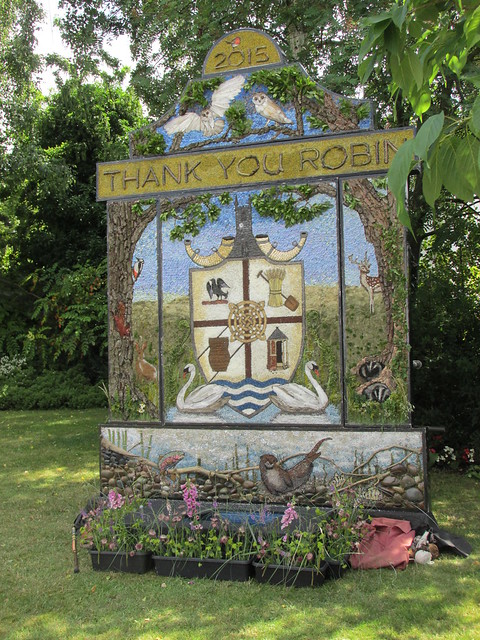 The origin of well dressing is not known. At one time it was mainly carried out around Derbyshire, but over the last couple of decades it has spread across the Midlands. In spite of the name the events are not always centred on a well, although the longest-running traditions still are.
The origin of well dressing is not known. At one time it was mainly carried out around Derbyshire, but over the last couple of decades it has spread across the Midlands. In spite of the name the events are not always centred on a well, although the longest-running traditions still are. Many people believe that the tradition grew up from pagan practices that honoured water gods. The ceremonies ensured villages would maintain a clean drinking supply. However, the tradition does not date back indefinitely into the past.
During the 17th century many villages in Derbyshire were affected by the plague, and it is possible that well dressing was revived by the Church of England to give thanks for those who survived.
Some villages, such as Youlgrave (which is Youlgreave if you check the sign at the other end of the village!) began the ceremonies when piped water arrived. Those events were called tap dressings and took place at the parish pump.
Originally the wells were celebrating by placing quite small posies of flowers but over the years they have become more elaborate. These days huge wooden frames are filled with clay and then flower petals and other natural objects are pushed into them to create pictures. They can be traditional or contemporary - serious or comic.
The choice of materials can be very creative. The dressing in the photo was the main one of nine at Aston-on-Trent this year. A list was posted next to it describing what had been used. It included alder cones, leaves, bark, coal, coconut, fresh and dried parsley, coriander, sage, dog hair, feathers, grass, lavender, leeks, oats, pebbles, millet, wool, twigs, shells, soot, rice, tapioca, turmeric, peppercorns, sand and coffee, among other things!
The events carry on across the district throughout the summer. The frames are left in place until the flowers fade - usually about a week or 10 days. The exact time depends on the placement. North-facing lasts longer, and it's best to avoid direct sunlight. At some point a procession or blessing ceremony will be held to consecrate the dressing.
The pictured dressing commemorates Robin Gibbard, an Aston resident who established the modern tradition of holding a well dressing in the village. He has been the driving force behind many recent dressings and some parts of this one - the owls and the otter - reference his past designs. There isn't actually a well on the spot these days, but the name of the adjoining cottage - Pump House - shows that there once was!

When we lived in Lichfield for a few years we regularly went round looking at the well dressing in Derbyshire as it was not too far away.
ReplyDeleteReally interesting to read about well dressing and its origins. Nice of you to share.
ReplyDeleteIt is a fascinating tradition and it does cross over the borders into other nearby counties. I noticed when we visited the village of Mow Cop last year that, although they didin't have the 'picture' type well dressings there were flowers planted around the two village wells there as well as little trinkets left. I remember my primary school had a visit to the well dressings at Tissington each year and that always seemed to be the start of the warm weather. I remember the smell of egg or fish paste sandwiches that pervaded the coach we travelled in. I have ancestors from Aston-on-Trent and the church there is lovely.:)
ReplyDeleteIt's the well dressing in our village this week, I'm going to put a couple of photos on my blog later. I love seeing the well dressings, the ones at Tissington and Ashford in the Water are always really good. I'm quite sure that well dressing does have pagan origins but more from the fact that springs and rivers were sacred places and usually each had their own special deity - Coventina's Well on Hadrian's Wall and St Anne's Well in Buxton for instance which was originally sacred to the goddess Arnemetia before being Christianized.
ReplyDelete